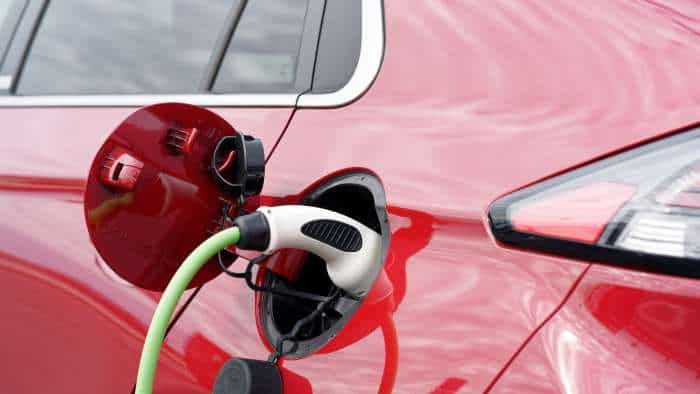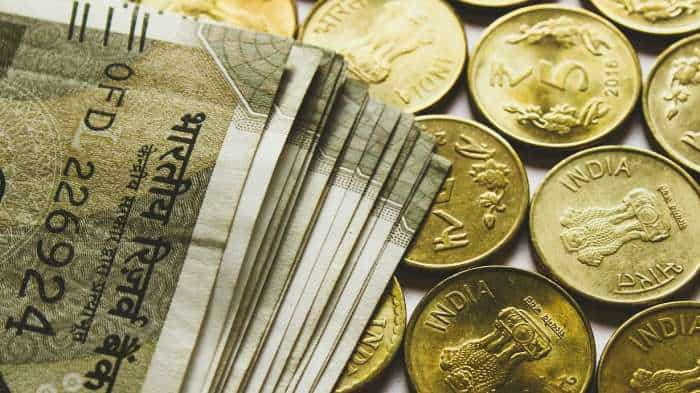Cashless economy at full speed! UPI transactions rise 30% in June; highest ever growth in Q1FY19
Unified Payments Interface (UPI) is a system that powers multiple bank accounts into a single mobile application (of any participating bank), merging several banking features, seamless fund routing & merchant payments into one hood.

Cashless economy is a serious agenda for the Prime Minister Narendra Modi government. Not to forget, the launch of demonetisation was done to make India a cashless country. Post demonetisation, the government has boosted their digital transactions with apps like UPI, BHIM, Bharat BillPay and Bharat QR. Recently, the official Twitter handle of BHIM (Bharat Interface for Money) which is managed by NCPI, highlighted that UPI transaction has been performing strongly, and in the latest June 2018 month it has seen growth of 30% in their transactions compared to previous month. This month’s transaction is also highest in entire first quarter of FY19.
The latest data of NCPI revealed that, a total 246.37 million UPI transactions were made in June 2018 which was up by 30.02% compared to transactions made in May 2018 where it stood at 189.48 million. In value terms, UPI transactions stood at Rs 40,834.03 crore in June month, rising by 22.66% from Rs 32,288.51 crore in May month.
In April month, UPI transactions stood at 190.08 million in volumes worth Rs 27,021.85 crore.
This month’s transaction in volume terms is also highest in entire one year. In July 2017, UPI transactions were at just 11.4 million, they further increased to 105.10 million in November 2017 and further to 145.50 million in December 2017. Start of 2018 has also been good with 151.83 million transaction in January 2018, followed by 151.83 million and 178.05 million in February and March month.
Cashless transactions have now become simpler and convenient thanks to BHIM UPI. #DigitalIndia #InstantPayments #HighOnUPI @dilipasbe pic.twitter.com/r0WCT7qApI
— BHIM (@NPCI_BHIM) July 1, 2018
In the month of June, the NCPI announced that they hit 10 million UPI transactions in a single day.
Unified Payments Interface (UPI) is a system that powers multiple bank accounts into a single mobile application (of any participating bank), merging several banking features, seamless fund routing & merchant payments into one hood. It also caters to the “Peer to Peer” collect request which can be scheduled and paid as per requirement and convenience.
With the above context in mind, NPCI conducted a pilot launch with 21 member banks. The pilot launch was on 11th April 2016 by Dr. Raghuram G Rajan, Governor, RBI at Mumbai. Banks have started to upload their UPI enabled Apps on Google Play store from 25th August, 2016 onwards.
How is it unique?
- Immediate money transfer through mobile device round the clock 24*7 and 365 days.
- Single mobile application for accessing different bank accounts.
- Single Click 2 Factor Authentication – Aligned with the Regulatory guidelines, yet provides for a very strong feature of seamless single click payment.
- Virtual address of the customer for Pull & Push provides for incremental security with the customer not required to enter the details such as Card no, Account number; IFSC etc.
- Bill Sharing with friends.
- Best answer to Cash on Delivery hassle, running to an ATM or rendering exact amount.
- Merchant Payment with Single Application or In-App Payments.
- Utility Bill Payments, Over the Counter Payments, Barcode (Scan and Pay) based payments.
- Donations, Collections, Disbursements Scalable.
- Raising Complaint from Mobile App directly.
Registration in UPI enabled application
Steps for Registration:
User downloads the UPI application from the App Store/Banks website
User creates his/her profile by entering details like name, virtual id (payment address), password etc.
User goes to “Add/Link/Manage Bank Account” option and links the bank and account number with the virtual id
Generating UPI – PIN:
User selects the bank account from which he/she wants to initiate the transaction
User clicks one of the option -
Change M-PIN
In the case of 3(a) -
- User receives OTP from the Issuer bank on his/her registered mobile number
- User now enters last 6 digits of Debit card number and expiry date
- User enters OTP and enters his preferred numeric UPI PIN( UPI PIN that he would like to set) and clicks on Submit
- After clicking submit, customer gets notification (successful or decline)
In the case of 2(b) -
- User enters his old UPI PINand preferred new UPI PIN (UPI PIN that he would like to set) and clicks on Submit
- After clicking submit, customer gets notification (successful or failure)
Get Latest Business News, Stock Market Updates and Videos; Check your tax outgo through Income Tax Calculator and save money through our Personal Finance coverage. Check Business Breaking News Live on Zee Business Twitter and Facebook. Subscribe on YouTube.
RECOMMENDED STORIES
03:48 PM IST











 Finance Ministry lists 10 things that make UPI unique, says record 1,658 crore transactions processed in a month
Finance Ministry lists 10 things that make UPI unique, says record 1,658 crore transactions processed in a month UPI transactions possible for NRIs with international phone numbers: Follow these simple steps
UPI transactions possible for NRIs with international phone numbers: Follow these simple steps  Avoid these 5 mistakes to prevent UPI fraud
Avoid these 5 mistakes to prevent UPI fraud  UPI: How foreign nationals and NRIs visiting India can make payments using Unified Payments Interface
UPI: How foreign nationals and NRIs visiting India can make payments using Unified Payments Interface UPI likely fastest digital product to hit 1 billion transactions-a-month, report claims
UPI likely fastest digital product to hit 1 billion transactions-a-month, report claims